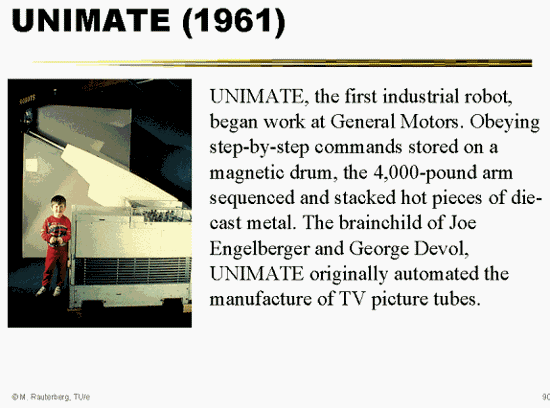Today’s factories are highly automated and use amazing robotic machines to do the work of thousands of men. These factory machines don’t look like the robots in the movies. They are a very specialized breed called CNCs, which stands for Computer Numerical Control machines. These sophisticated machine tools are operated by computer programs.
But these aren’t new toys, by any means. CNCs have been around since the early 1970s when computer-controlled systems were introduced.
The first modern-day industrial robot, the Unimate, was put into use by General Motors in 1961. The Unimate was a 4,000-pound robotic arm that attached to a giant steel drum and did things like pour liquid metal into die casts, weld auto bodies, and lift 500-pound car bodies.
The Unimate performed tasks that humans often found dangerous or boring, and did them with speed and exacting detail. The robot never called in sick, asked for a raise, or went on strike. Plus, it worked 24 hours a day. As you can imagine, robo


